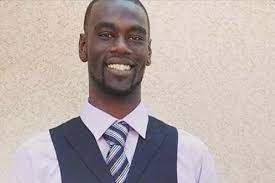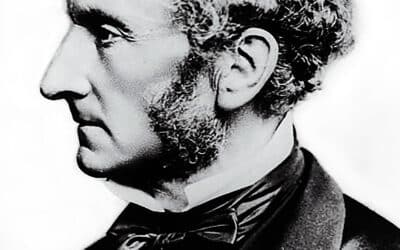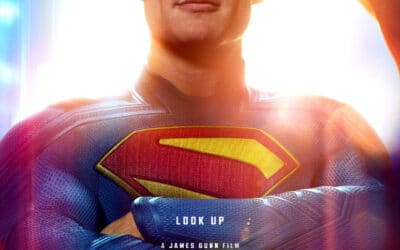The brutal killing of Tyre Nichols literally at the hands (and feet) of several Memphis police officers might be a source of cognitive dissonance for some people. But before we get to that, let’s begin at the beginning.
To start with the moral basics, the officers who initiated force against Nichols, a 29-year-old father, and the others who joined in once the assault was in progress, had no apparent reason to believe Nichols posed any danger to them or the public. Judging by the body-cam video, the first officers to stop and approach Nichols’s car were exceedingly hostile from the start. It would be wrong to say they escalated the situation — rather, they appear to be in high confrontational mode from the get-go.
Some might say that Nichols failed to comply with the officers’ angry orders to get out and on the ground as they pulled him from his car. From the video, it looks more like Nichols was shocked and disoriented by what was happening. “What did I do?” he asked. He didn’t strike the officers; he asked a question. I suspect that police culture doesn’t cotton to such impertinence even when a suspect appears unthreatening. Yes, he ran away when he got the chance (and was soon caught and brutally punched and kicked again), but that was after being assaulted, tased, and pepper-sprayed. Watch the videos from the police body cams and pole-mounted surveillance camera for yourself. They’re not easy to view.
Simply put, this has all the looks of an atrocity by members of the now-“permanently deactivated” SCORPION (Street Crimes Operation to Restore Peace in Our Neighborhoods) unit, who knew they were being videoed.
The sheer brutality will confirm many people’s beliefs about the police. But there are problems with what many people think they know. As the saying goes, we often know things “that ain’t so.” Here’s where the dissonance sets in.
Five officers have been fired and charged with second-degree murder and other serious offenses. Others, including three onlooking fire department paramedics, are being investigated and have been dismissed. The street demonstrators who are demanding accountability may have missed the reports. Or they can’t take yes for an answer. Never let the facts get in the way of a good slogan: “Accountability now!” Should the cops be lynched? (Other cops who killed citizens in recent years have been convicted and imprisoned.)
This accountability is good, but prevention is needed too. Police departments must examine their hiring and training procedures in order to exclude bullies and bullying tactics as much as humanly possible. Police should not be taught that they are an occupying army. It would help if they were not furnished military gear by the national government and if they did not think of themselves as paramilitary rather than civilians. Moreover, offending police officers must not be able to take refuge in things like qualified immunity. You and I are liable for the damage we do, even unintentionally. So should the cops be.
As noted, the SCORPION unit, set up to focus on “high-crime spots,” is now history. Such things exist in other American cities. Forming the unit presumably was well-intended because, throughout the United States, most violent crime occurs in a relatively small number of areas, largely lower-income black and Latino communities. As Rafael Mangual, author of Criminal (In)justice: What the Push for Decarceration and Depolicing Gets Wrong and Who It Hurts Most, points out, if you were dropped into a random location in America, chances are you would land in a low-crime area. Note who would suffer from a reduction in policing in high-crime areas: the poorest, most vulnerable Americans; they would be black and Latino. That’s probably why, when polled, black Americans overwhelmingly oppose shrinking the police presence.
It thus seems reasonable for the police to focus on where the crime is: resources are not unlimited. But that shouldn’t be a carte blanche for cops or — and this needs more attention — national and state legislators, who tell the cops what to treat as crimes. The police problem would be far smaller if governments did not prohibit drug use, manufacturing, and sales. That’s because a “war on drugs” is necessarily a war on consensual transactions, which have no complaining witness. That fact prompts the police to use tactics — undercover operations, reliance on dodgy informants, no-knock raids — that create sure-fire conditions for violent confrontations and lethal errors involving innocents. (See the Breonna Taylor killing for an example.) In sum, terminating the drug war (and other wars on vice) would reduce the number of potentially dangerous contacts between the police and lower-income people, as well as improve the quality of the remaining contact. It would also rid the drug trade of the thuggish gangs that run black markets. Prohibition kills. (Much else must be done: for example, end occupational licensing and barriers to small-business formation, and let lower-income kids escape the government’s schools.)
Here’s another possible source of cognitive dissonance: the Nichols case shows us what we already should know. Police brutality is not about race — it’s about police brutality. Nichols was black, but so are the five dismissed and indicted officers. Two of the three fired EMTs are black. One white officer is being investigated, and another cop under investigation has yet to be identified. The Memphis chief of police is a black woman. It is hard to see how this is a racial atrocity. Logic will be twisted to make it appear so, but it will not wash. To attribute the black cops’ conduct to white supremacy is to deny them agency — which strikes me as patronizing — not to mention racist.
To the extent we have a police problem, it’s everyone’s problem — but especially lower-income people no matter their skin tone. They have more contact with the police than higher-income people. Lighter-skinned lower-income people are also beaten, shot, and killed by police, but they apparently aren’t newsworthy in our race-distracted era.
To see how wrong the Black Lives Matter narrative is, read this paper by Zac Kriegman, the top Reuters data analyst who was fired simply for showing his bosses that their crime coverage was wrongly premised on BLM’s narrative, which is unsupported by the data. (Kriegman wasn’t refuted; he was summarily dismissed.) The historian Barbara Fields, coauthor of Racecraft: The Soul of Inequality in American Life, asks if you really cared about police brutality, why would you lead white people to falsely believe that only black people need to fear the cops?
Next, as bad as police aggression is, its frequency should not be exaggerated. Dishonesty is a bad policy; it discredits efforts to reduce that aggression as much as we can. In 2022, says Mapping Police Violence, about 1,100 Americans (of all colors) were killed by police, most of them by firearms. That’s down not up over the last several decades. (The Washington Post says the shootings alone numbered 1,096.) That’s all killings, including justifiable ones. The number of killings of unarmed Americans is in double digits (about 40 in 2020), although unarmed people can be dangerous too, especially when they reach for a policeman’s gun. The 1,100 figure is nothing to be complacent about, but perspective is necessary.
Police make 10 million arrests every year in a country of over 330 million. So let’s not exaggerate the problem. What we cannot truthfully say is that it’s police open season on a certain group of Americans. Are black men killed disproportionately? Black people make up 13 percent of the American population and by that benchmark are overrepresented among victims of police killings. But is that the right benchmark? Kriegman writes,
The correct benchmark for measuring bias in police use of lethal force is the number of high risk encounters for each group, and not the population of each group…. [O]n average, violent crime rates are dramatically higher in predominantly black communities than they are in predominantly white communities…. Therefore we should expect there to be more encounters in those communities for the purpose of achieving entirely legitimate and laudable policing objectives.
When we use the appropriate benchmark, Kriegman writes, “the supposed anti-black bias disappears completely, and possibly, even reverses.” (By analogy, men make up almost 50 percent of the general population, but over 90 percent of the prison population. Does that prove the criminal justice system guilty of misandry? Not if you use the proper benchmark: the population of people who commit violent crimes.)
As I’ve suggested, policing could be improved in various ways through better screening and training, and full transparency and accountability. It’s got to happen — and soon. Poor policing harms the most vulnerable in two ways. It directly victimizes people through police brutality, and it indirectly victimizes people by leaving them at the mercy of street criminals. Both ways are intolerable.
Yet we should understand that no matter how much better policing could be, it won’t be good enough. The reasons are simple: policing today is a monopoly of governments, and it is politicians who define the crimes that the police are mandated to combat. We all know what coercive monopolies produce: shoddy products and services at unnecessarily high prices. We certainly need policing because some people will be inclined to have their way by force. To get better policing, then, we must insist that the politicians and bureaucrats step aside and let competitive free enterprise — with full transparency and accountability — deliver high-quality and affordable services, just as it has done with the other services it delivers.








